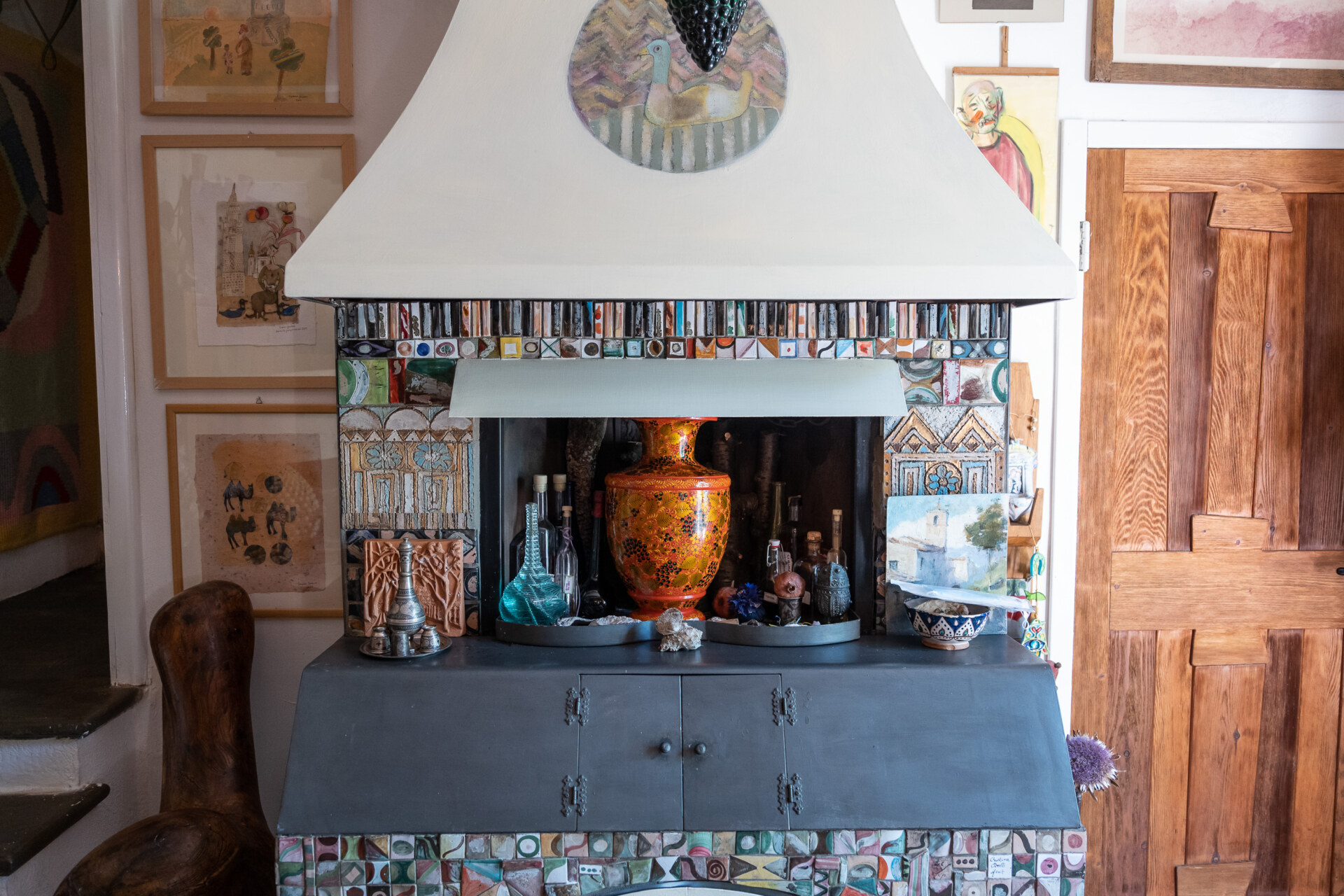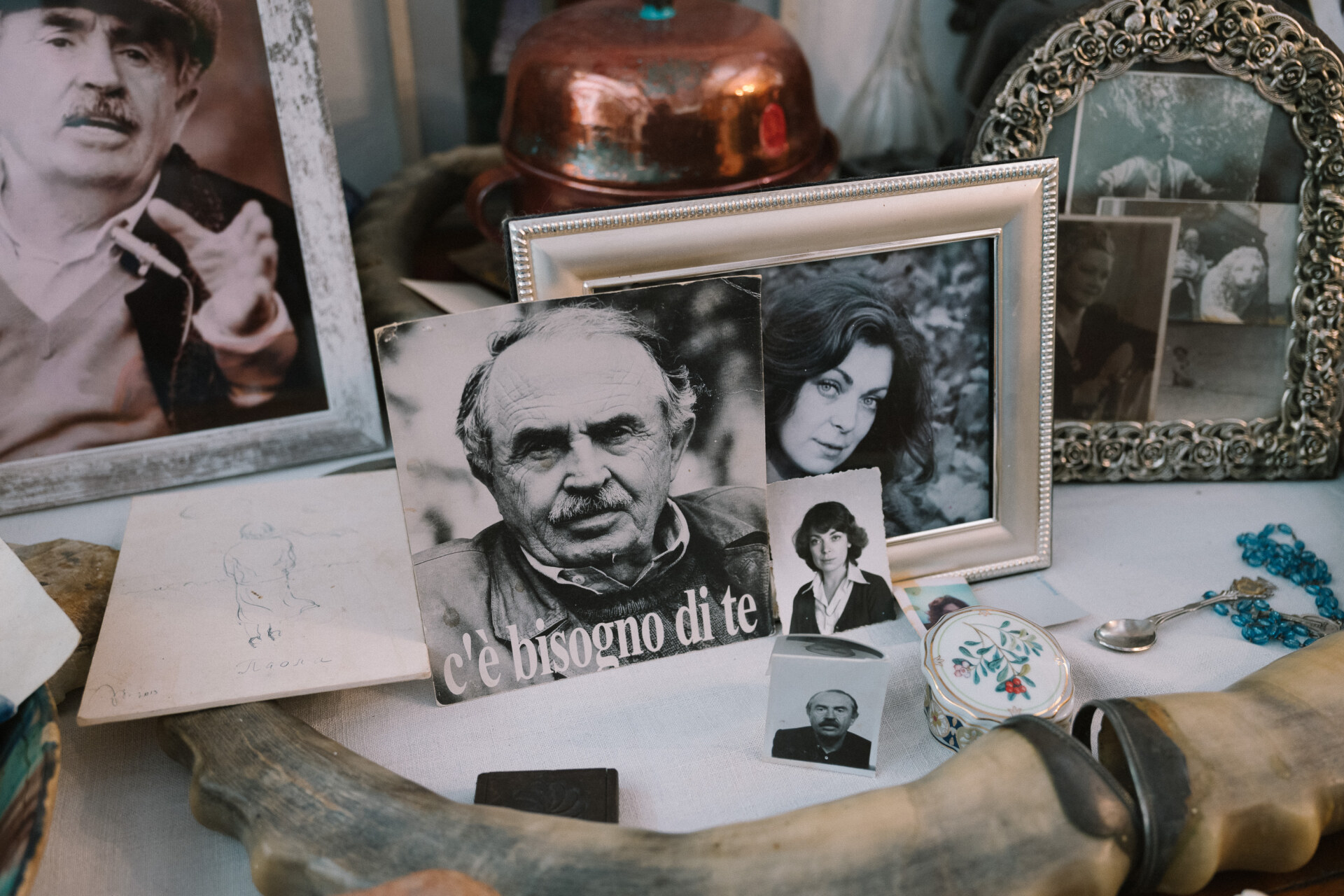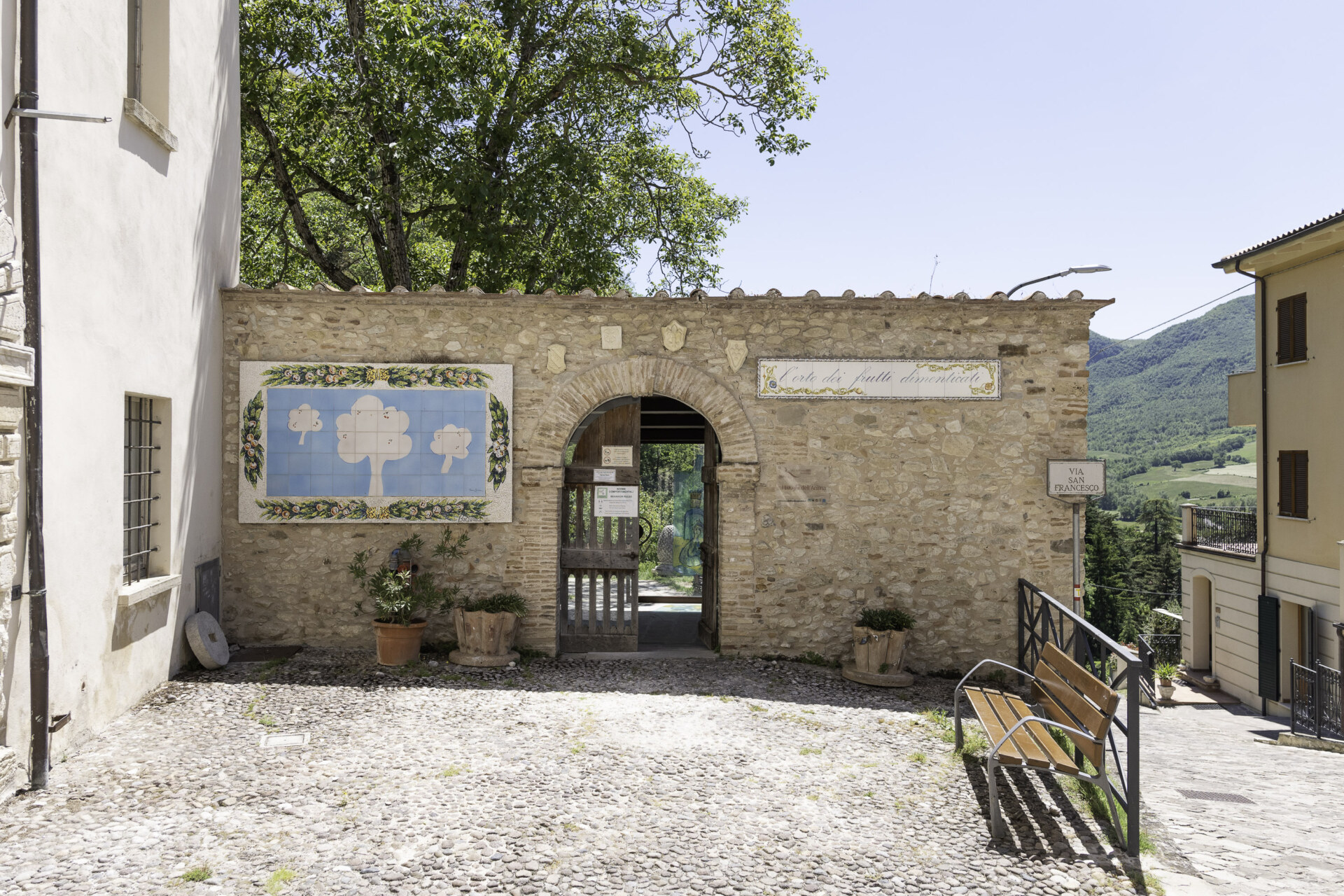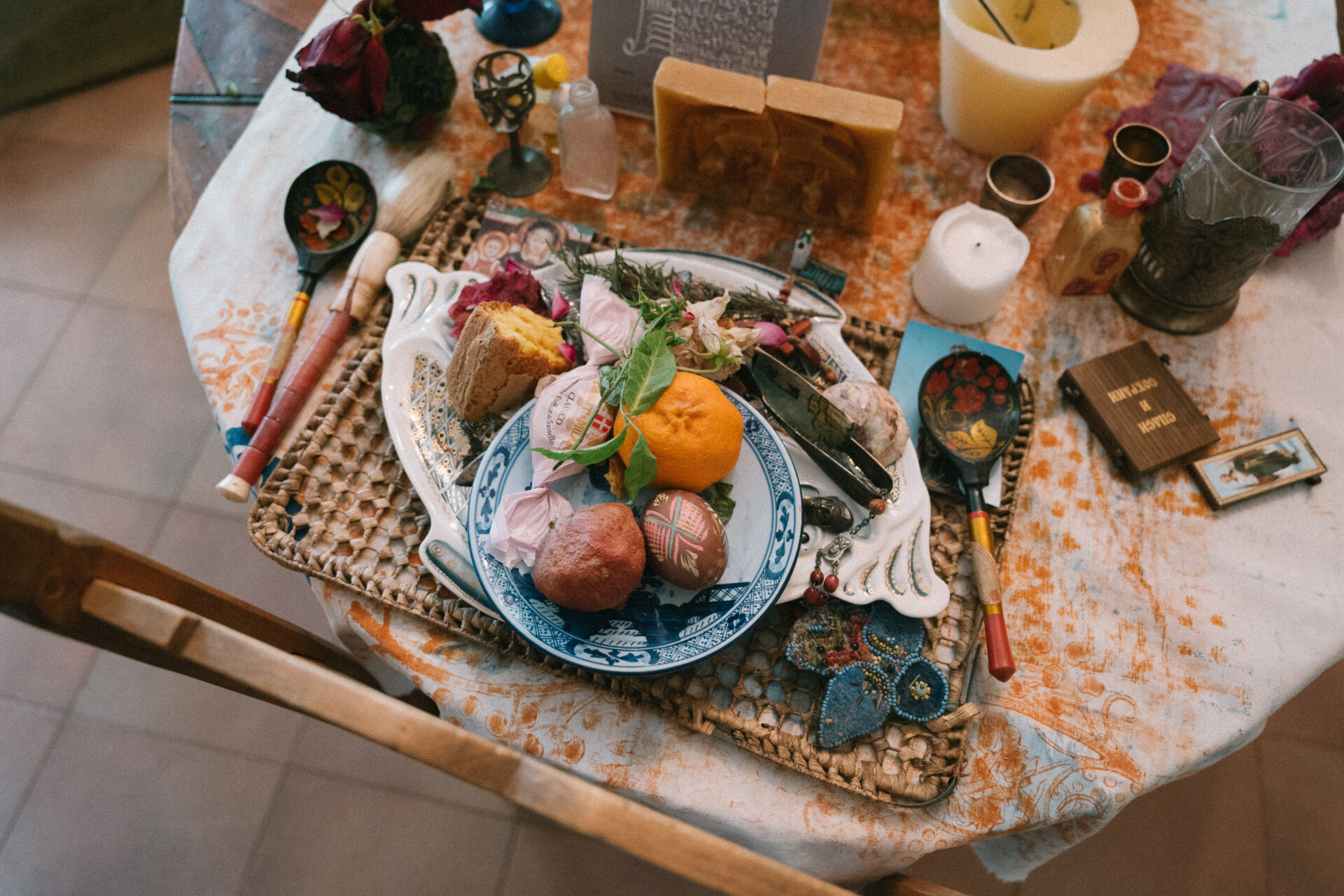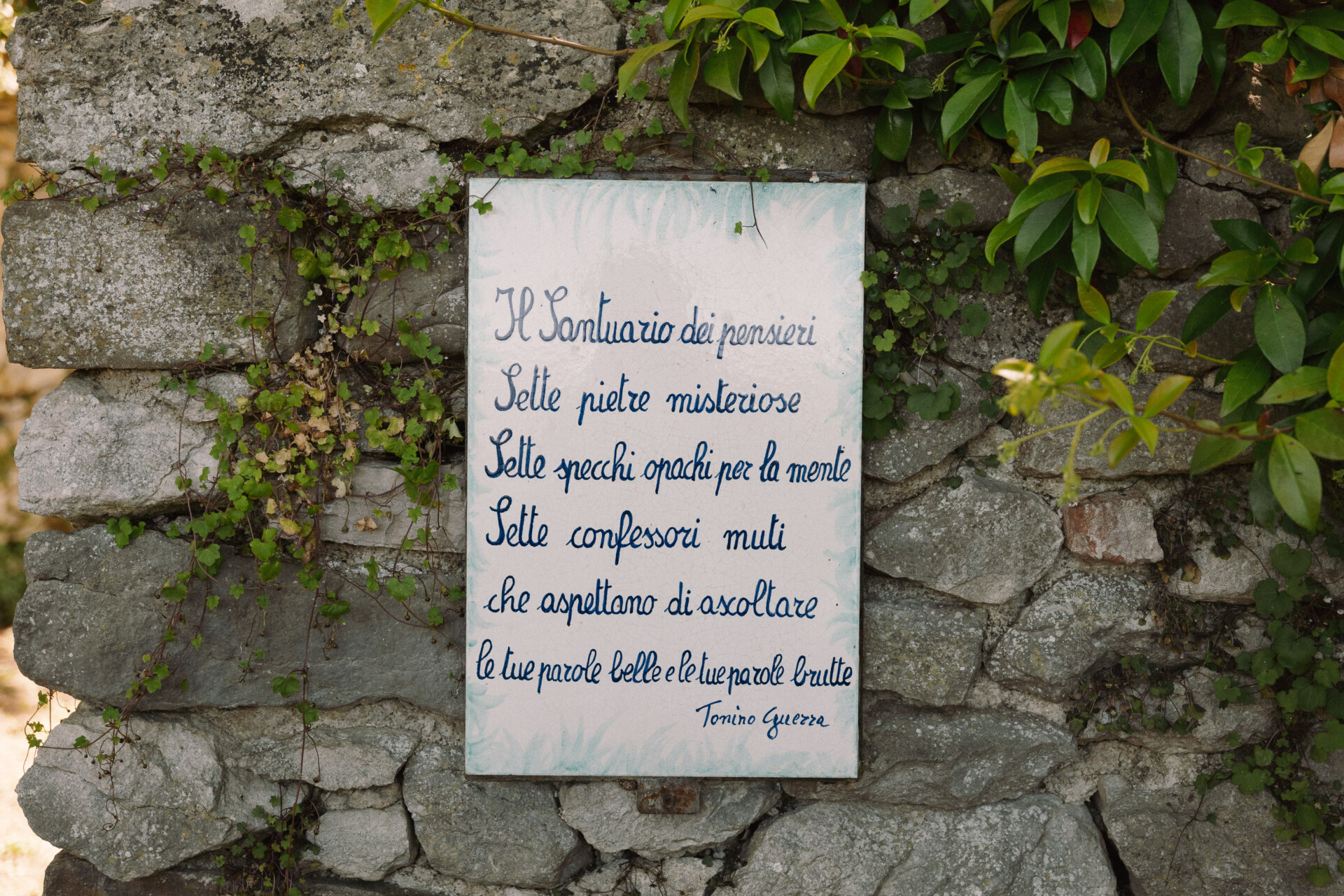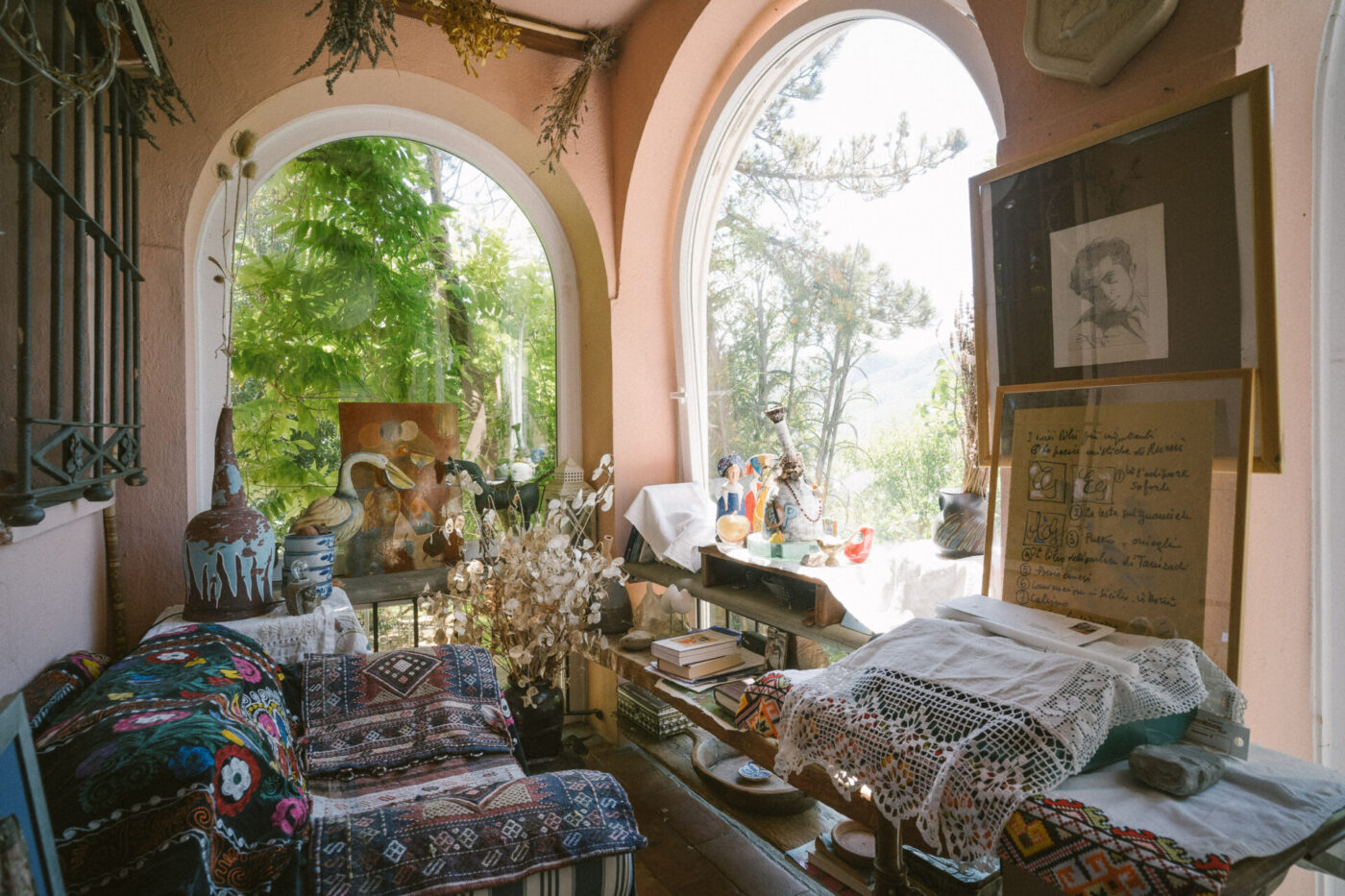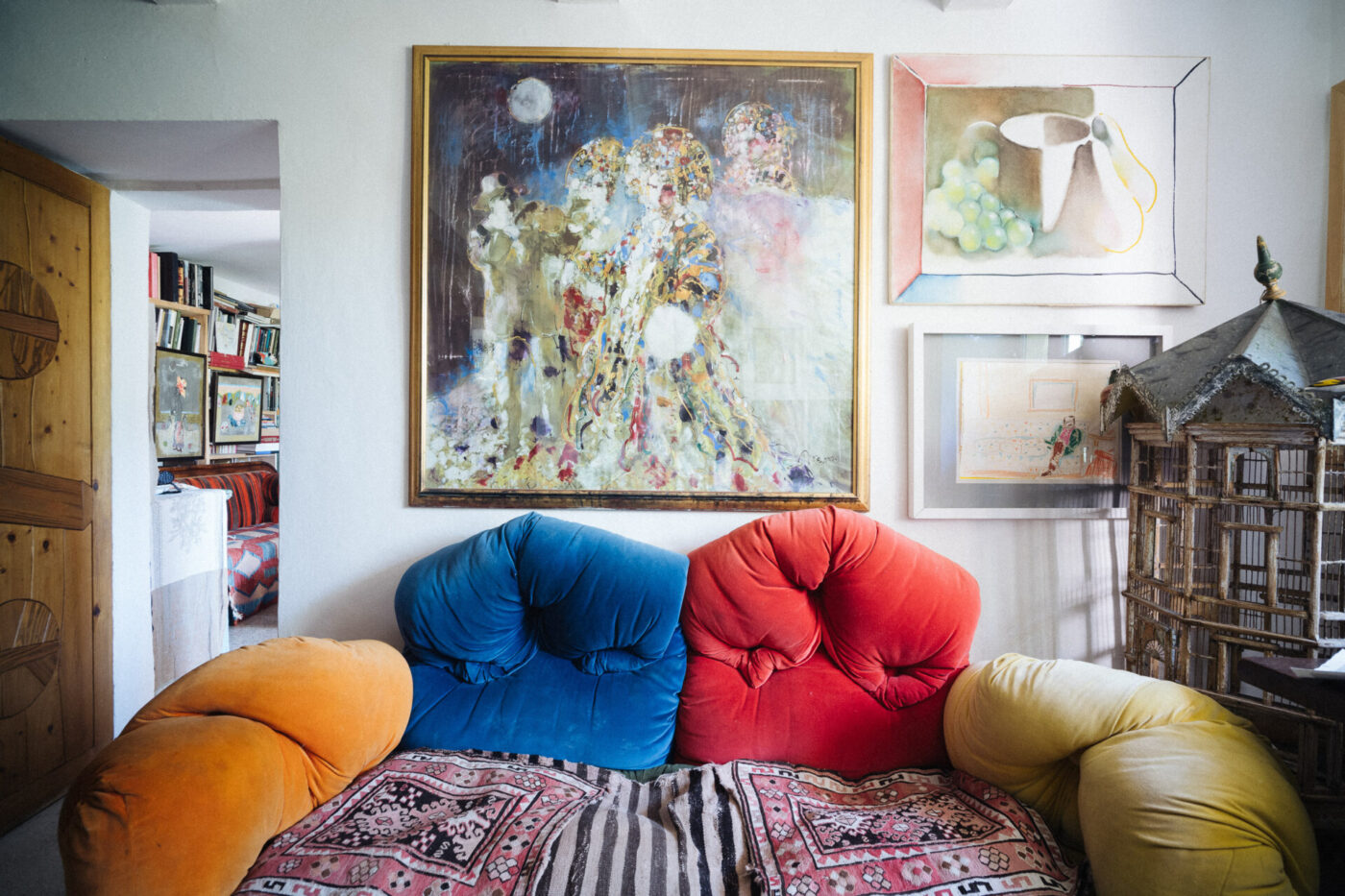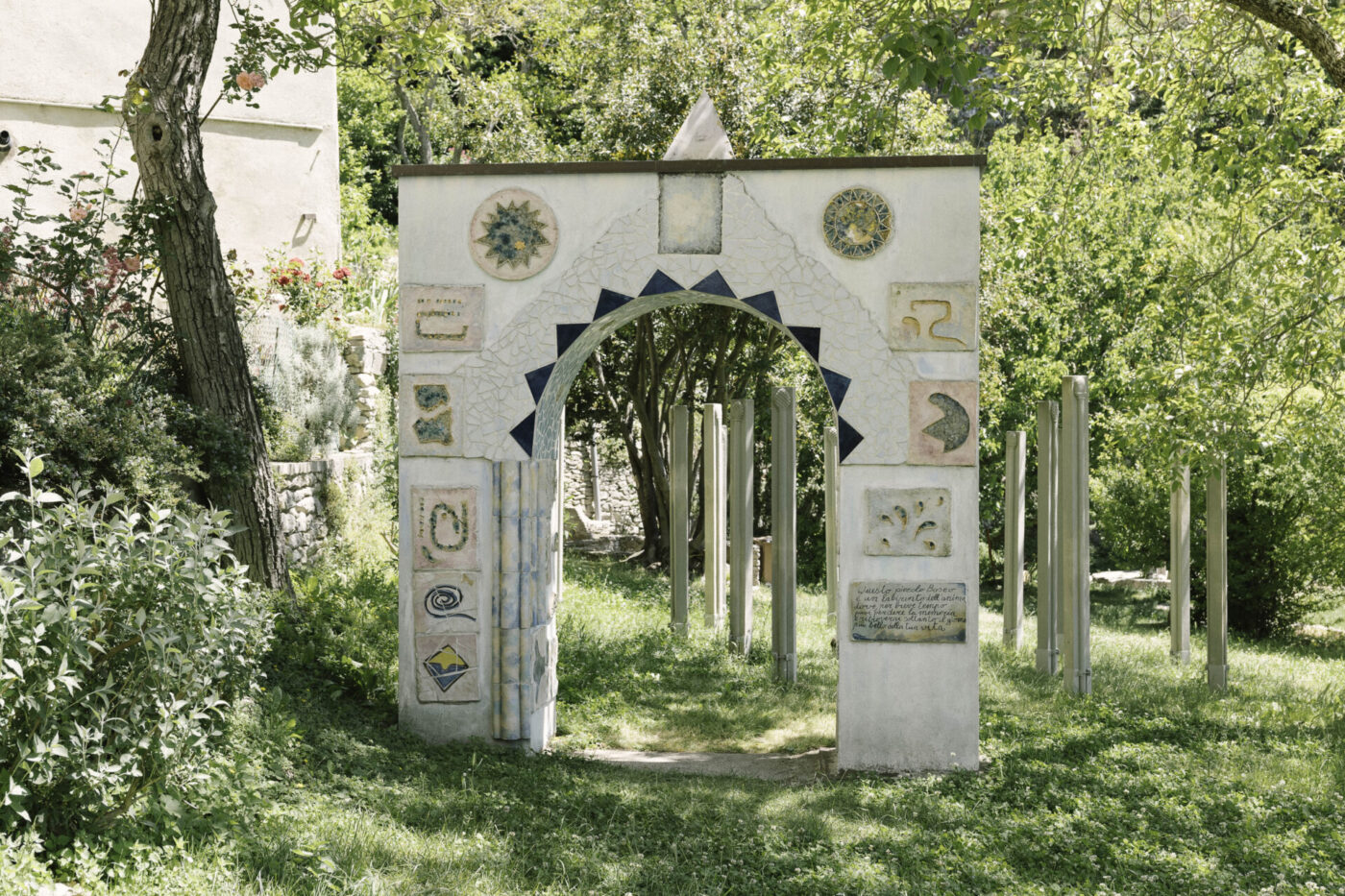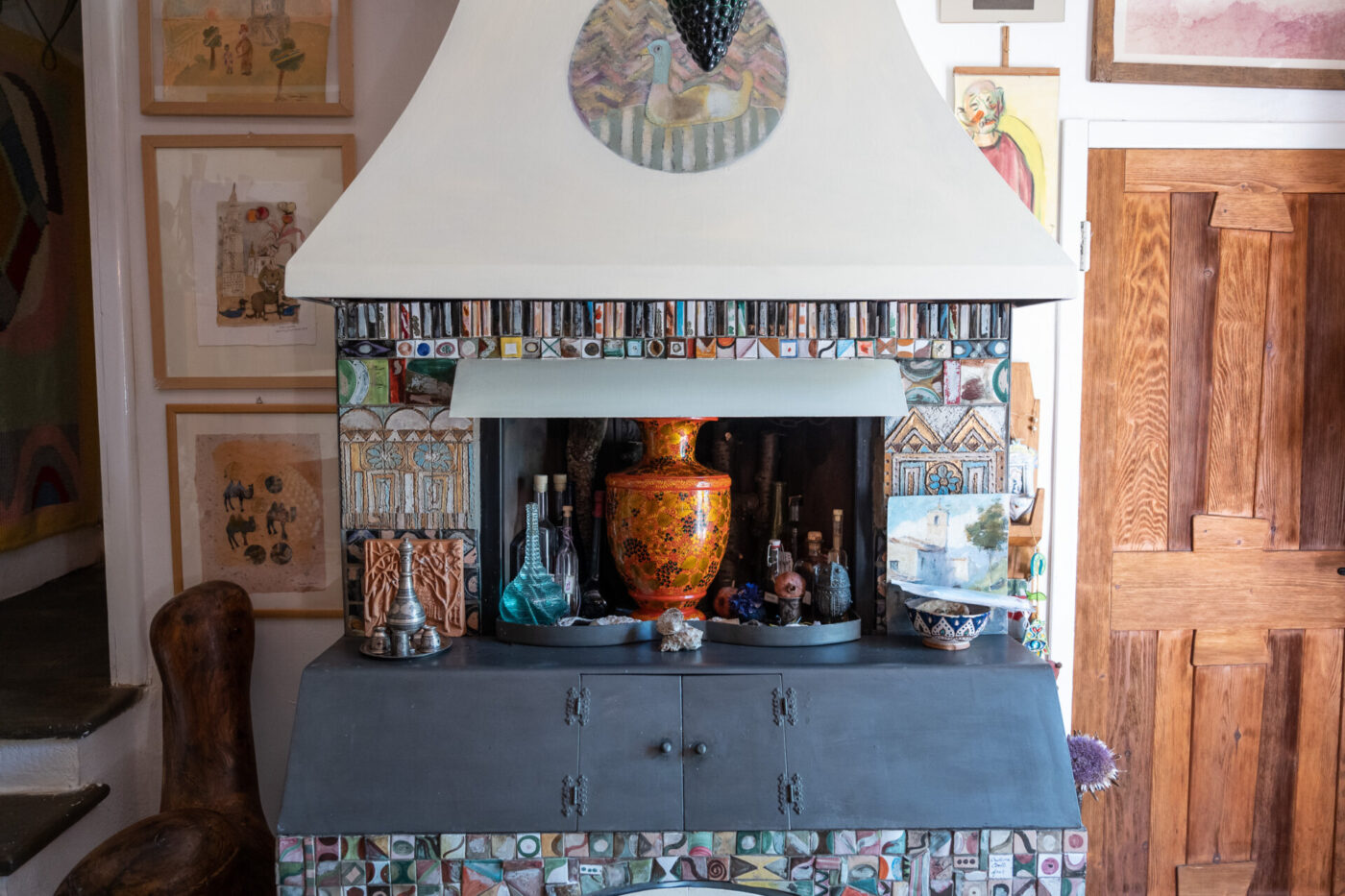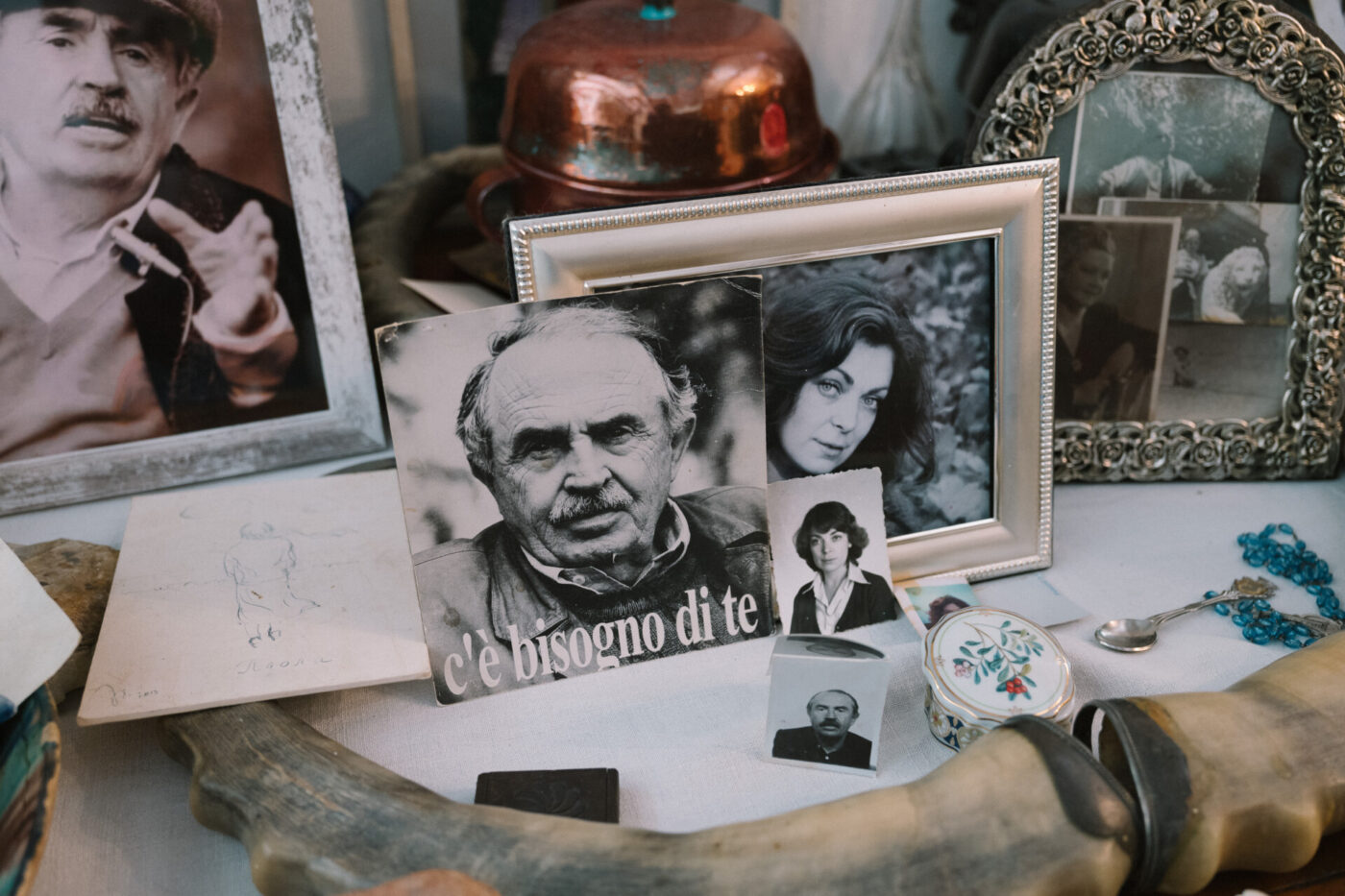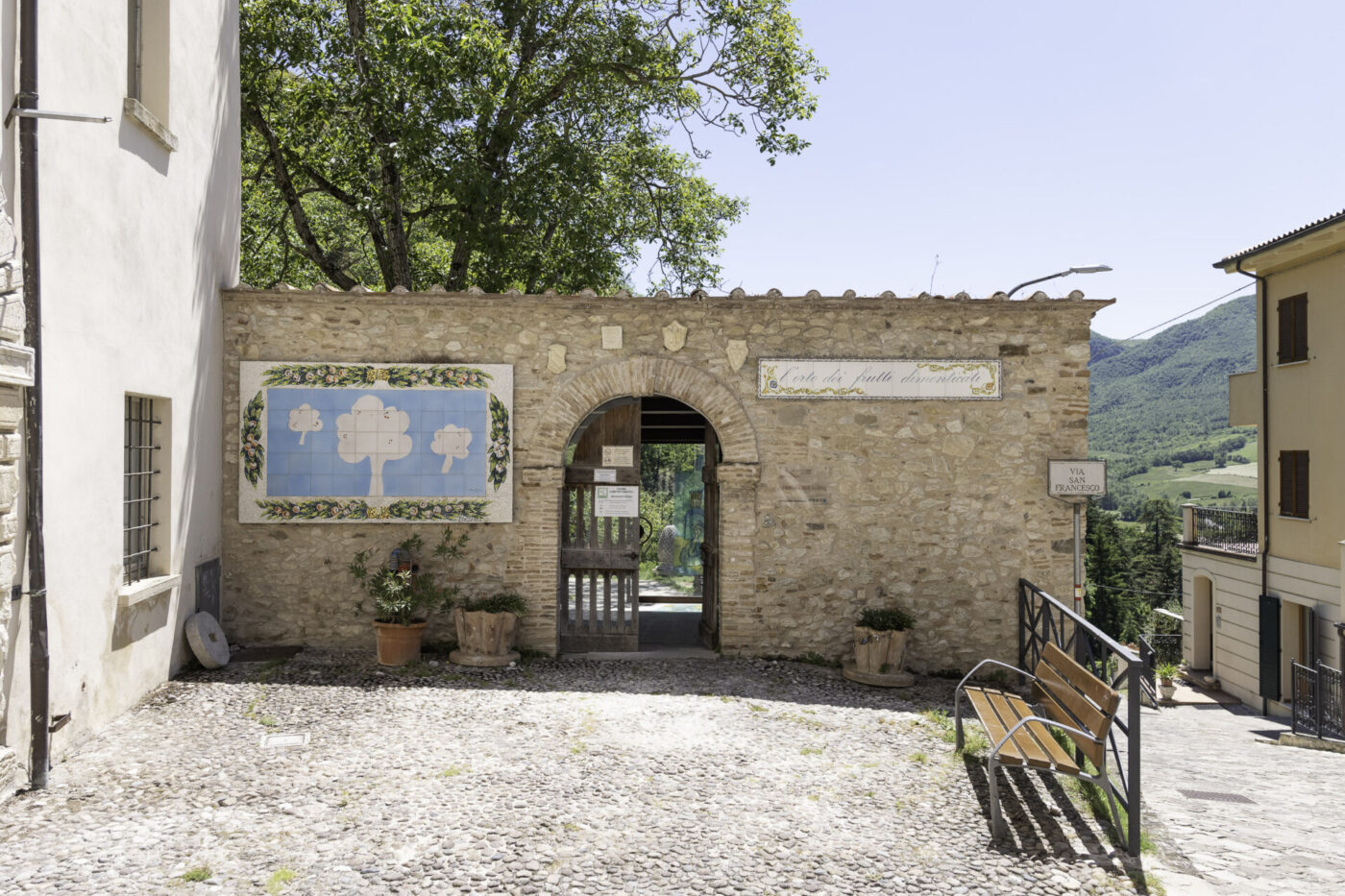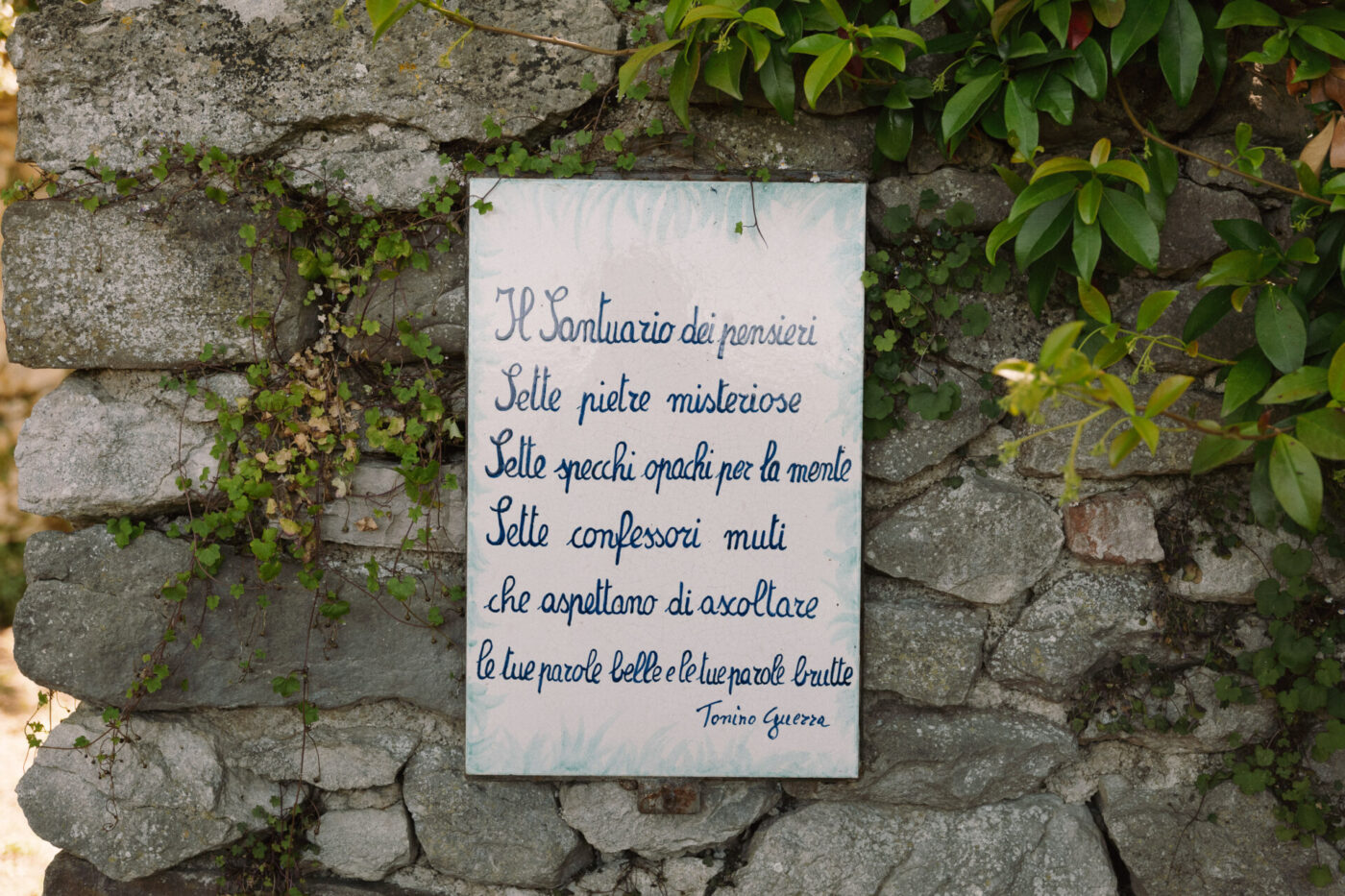“You must be here for Tonino!” she shrieks, dropping her grocery bags to the ground with excitement. She seems to be in her 80s, with electric red hair and piercing blue eyes. We’d just entered what felt like an enchanted garden, nudging open a rusty gate in search of a museum, instead finding a colony of cats, metal and ceramic sculptures, embroidered carpets, and grassy hills all around. A television left on and a ceramic bowl full of ripened tomatoes are the only indications that the house was inhabited.
This is how we accidentally break into the house of the Guerras and meet Lora Guerra, the wife of Tonino Guerra, the famous screenwriter and multidisciplinary artist whose works inspired our visit to this lush corner of Emilia-Romagna.
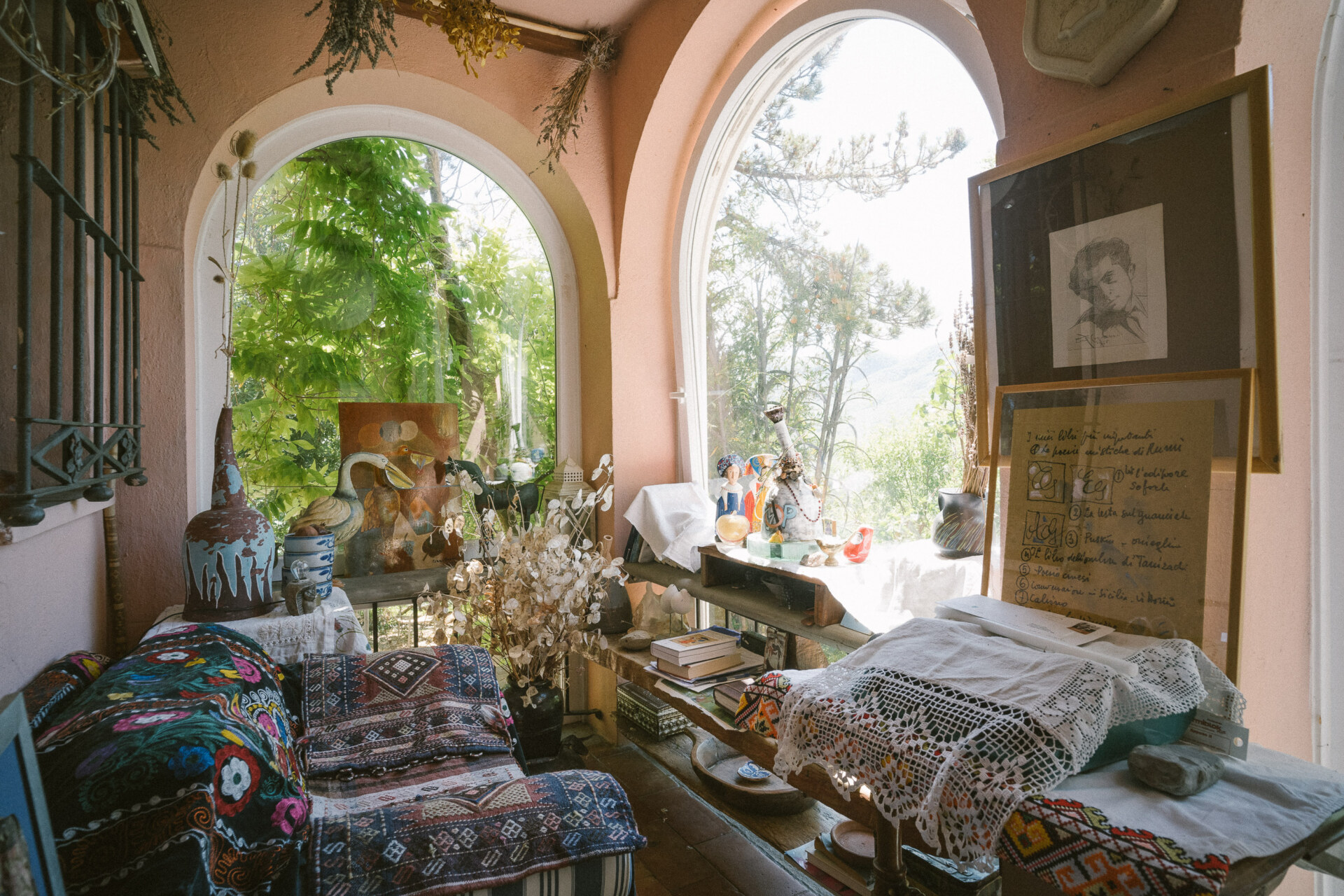
Photo by Luca Bacciocchi, 2022; Courtesy of Regione Emilia-Romagna-Settore Patrimonio Culturale
––
Emilia-Romagna is a region that holds many hidden gems: a semi-abandoned town with some of the most intact examples of Rationalist architecture, a tiny borgo whose walls famous painters have marked since the 1960s, and medieval villages secluded from the agroindustrial landscape that dominates the rest of the region, like those of Santarcangelo di Romagna and Pennabilli.
It’s these towns that count Tonino Guerra among its former residents. This renowned screenwriter worked with some of the greatest neorealist directors of the last century, including Fellini, Visconti, Mastroiami, Tarkovsky, and Wim Wenders. You may know him from films such as Amarcord (1973), a classic about pre-industrial Italian society that led him and Fellini to win an Oscar; the beautifully melancholic Nostalgia (1983) with Tarkovsky; and the romance classic Beyond the Clouds (1995) in collaboration with Mastroiami and Wim Wenders.
After his retirement from screenwriting, Guerra, who was born in Santarcangelo di Romagna, flourished as a multidisciplinary artist dedicating himself to poetry, design, and sculpture. To practice these arts, he moved to the inland town of Pennabilli with his aforementioned wife Eleonora (Lora) Kreindlina Guerra, who herself has worked with some of the greatest cinematographers of Russian cinema.
Both here and in his hometown of Santarcangelo di Romagna, you can find his installations scattered around like easter eggs. He had an affinity for designing fountains, like “Il Bosco della Pioggia”, a fountain depicting the dialogue between a forest and its rain; “La fontana della Chiocciola”, sculpted as a snail to remind of the virtues of slow living; and “La Fontana della Pigna”, located on Santarcangelo’s main square, where Tonino used to play as a kid after school.
But it’s Guerra’s open-air museum I Luoghi dell’Anima, Spaces of the Soul, in Pennabilli that really showcases his creativity (scroll down for a guide to the exhibitions). These seven public spaces form a network of art installations dispersed throughout the village, in no particular order, with the goal of evoking wonder and spiritual discovery. Among them, there’s “Il Giardino dei Frutti Dimenticati”, a public orchard of forgotten fruits and vegetables, embellished by statues and sculptures; “Il Giardino dei Pensieri”, a sculpture installation that serves as a meditation space; and “La Strada delle Meridiane”, a road of sundials running through the historic center.
It was in search of Guerra’s official museum, Il Mondo del Tonino Guerra, that we mistakenly enter La Casa Dei Mandorli, Tonino’s former home and Lora’s current one, which, with no hesitation, Lora invites us into. The house/museum, which certainly leans more towards house than museum, is chock full of art pieces, produced by Tonino or gifted by colleagues and friends: a colorful sketch by Wim Wenders, a watercolor by Michelangelo Antonioni and De Chirico, illustrations by Renzo Vespignani. An armchair entrenched by walls of books, plants, and mosaics in a sun-filled veranda overlooking the fields below is where Tonino would sit to write. Lora points vaguely to the horizon, explaining that there are many natural springs in the hills around Pennabilli; they reminded Tonino of “the infancy of the earth herself,” she says.
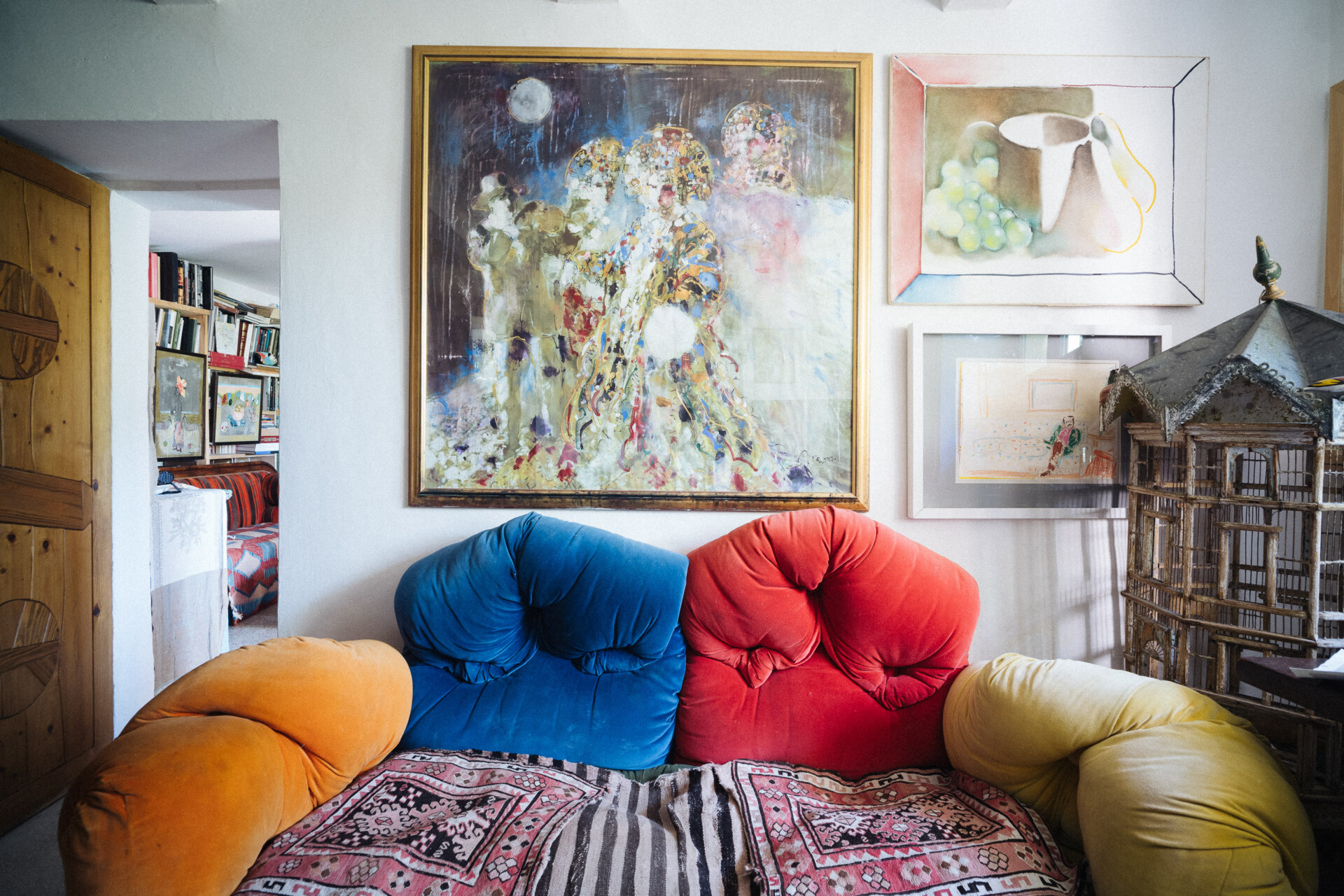
Photo by Luca Bacciocchi, 2022; Courtesy of Regione Emilia-Romagna-Settore Patrimonio Culturale
Every room, every corner has a story that Lora is eager to tell: how a painting inspired the plotline of a classic neorealist film, the origins of their vase collection, or Guerra’s experimentation with furniture design. This is how we learn about the symbolism of the butterfly ever-present in Tonino’s art. After joining the partisan resistance in WWII, Tonino was captured and imprisoned in the camp of Troisdorf. After liberation, he wrote:
Contento, proprio contento
sono stato molte volte nella vita
ma più di tutte quando
mi hanno liberato in Germania
che mi sono messo a guardare una farfalla senza la voglia di mangiarla
Happy, so happy,
I have been many times in life,
but not as much as when
I had been liberated in Germany
and I saw a butterfly without wanting to eat her
Lora pulls us out to the garden, which extends up to the peak of Pennabilli’s hills and oversees the Valmarecchia valley (you can see this landscape in the background of the Mona Lisa). It was here that, in 1994, on invitation by Tonino, a cast of a holy bell was brought to Pennabilli by Tenzing Gyatso, the 14th Dalai Lama, as a way of honoring the Italy-Tibet connection. (Once, a monk from Pennabilli traveled by foot all the way to Tibet and established a community there, but that’s a story for another time.)
As the sun starts to fade, Lora sets dinner, wine included, for one too many. For the last twelve years, since Tonino’s passing, Lora has left a place for him at the table, one of her shamanastic ways of remembering and honoring him. She speaks of him frequently in present tense, his presence coming alive within their ritualized home, adorned as an altar.
As we say our goodbyes, Lora asks if we have plans for the following night, offering an irrefusable invitation to celebrate Russian New Year’s eve together in Santarcangelo. The restaurant is none other than La Sangiovesa–founded by the Maggioli family, who, aided by the imagination and flair of Tonino himself created a bastion of Romagnola cuisine–where we share pasta coi fagioli, agnolotti, and a sumptuous dessert of cooked pear with cream and fior di latte gelato with Lora and her close friends, including Miresa Turci, the daughter of Giulio Turci, a surrealist painter and old friend of Tonino. (Fun fact: Giulio Turci’s father owned the first cinema in Italy, whose story inspired the iconic film Cinema Paradiso.)
And this is the beauty of traveling off-the-beaten path in Italy: a simple search for something different can lead to one of the most memorable dinners of your life. You find art deeply interwoven into even the smallest of towns and poetry permeating every aspect of living, no need to queue for sold-out museums. Perhaps these words of wisdom, passed on to us by Lora from Tonino Guerra, says it all:
la bellezza è già una preghiera (beauty is already a prayer).
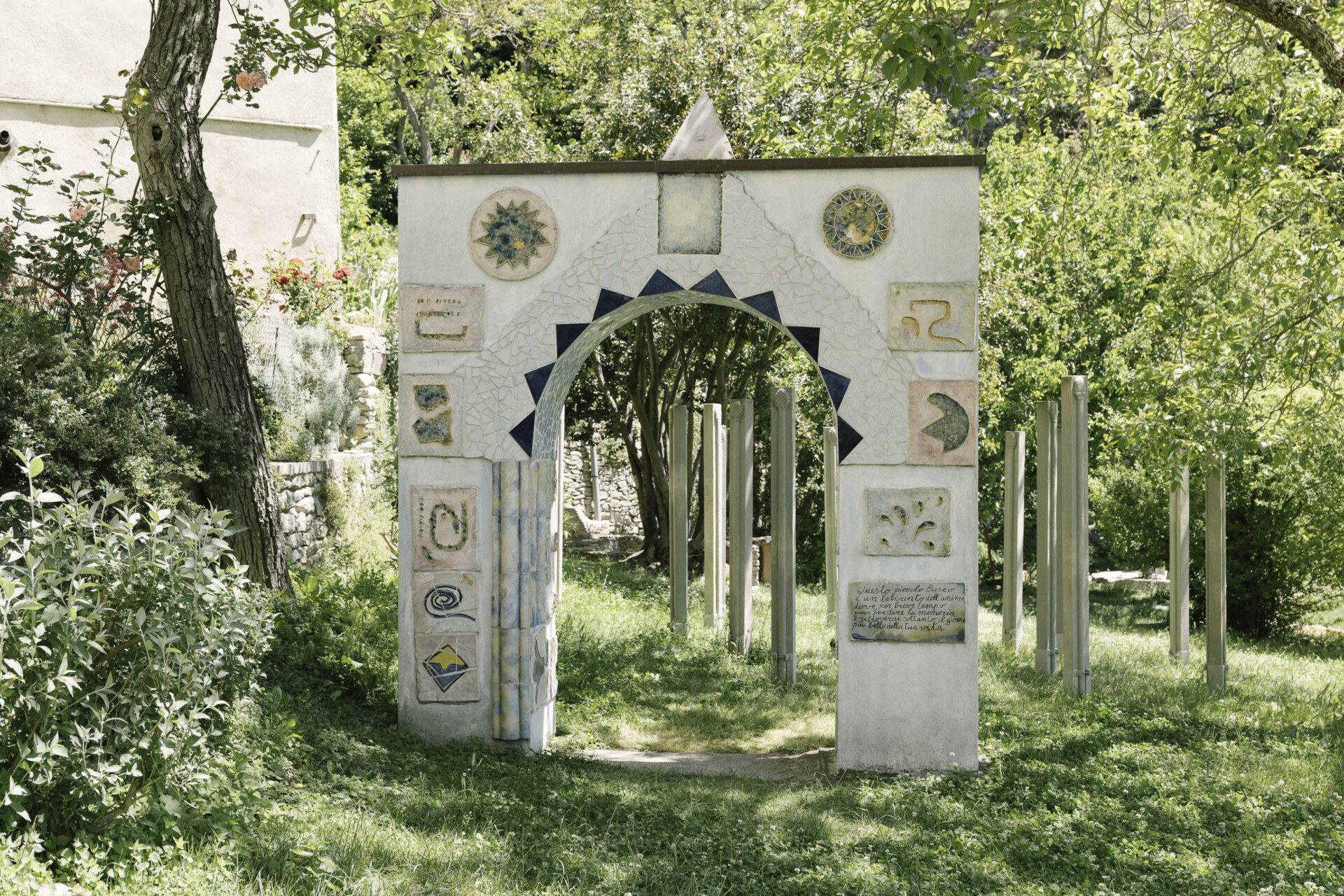
Photo by Luca Bacciocchi, 2022; Courtesy of Regione Emilia-Romagna-Settore Patrimonio Culturale
THE STOPS OF I LUOGHI DELL’ANIMA
L’Orto dei Frutti Dimenticati: One of the most memorable stops of the open-air museum is L’Orto dei Frutti Dimenticati, the garden of forgotten fruits, where ancient fruit tree species and the flora of the Apennine countryside that are no longer cultivated find sanctuary. Here, the Dalai Lama even planted a mulberry tree during a second trip in 2005 (he loved Pennabili so much he visited twice).
L’angelo Coi Baffi: The world’s tiniest museum, L’angelo Coi Baffi (The Angel with Moustaches) houses only one painting, which depicts the story of an angel who proudly wants to show his crafted stuffed birds to the other angels, but ends up being mocked by them. One day, he displays them again, and the birds suddenly start to fly; an evocative metaphor on the power of imagination.
Il rifugio delle Madonne abbandonate: A collection of Madonnas created on terracotta by various artists who, according to Tonino’s imagination, took refuge to escape neglect of man and oblivion.
La strada delle Meridiane: A road of six sundials running through the historic center that mark the time according to ancient methods belonging to different historical eras.
Il giardino pietrificato: Seven ceramic carpets by ceramicist Giovanni Urbinati with imaginative illustrations.
La Madonna del rettangolo di neve: A small stone chapel that has served as a symbolic and ritualistic space for Pennabilli’s community since 1754.
Il santuario dei Pensieri: A meditative sanctuary housing seven enigmatic stone sculptures symbolizing facets of the mind, body, and soul.

Ristorante La San Giovesa
WHERE TO EAT IN SANTARCANGELO AND PENNABILLI
Lazaroun – Go to Lazaroun if you want to indulge in traditional Romagnola cuisine: good for the body, good for the soul. Their pappardelle rustiche with ragù al coltello is an amazing rendition of bolognese sauce, and the porchetta and faraona are to die for.
La Sangiovesa – Another hotspot for traditional Romagnola cuisine. Here you may admire many installations from Tonino Guerra, especially the unique furnaces that adorn every room. The restaurant is connected to the ancient Tuva caves that form an underground infrastructure of the town.
Oltre Borgo – Come here for a cozy aperitivo with beautifully crafted drinks and some tasty snacks like mozzarelle in carrozza and olive ascolane.
Osteria Piadina e Collina – This small family-owned restaurant offers traditional piadine with an incredible selection of fresh products from Italy’s central regions.
Osteria Al Bel Fico – Lora’s very own recommendation for Pennabilli: high-quality cured meats, vegetable gratin, and fresh squacquerone that is out of this world. Come hungry!


